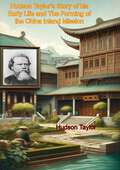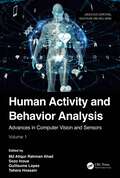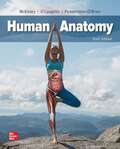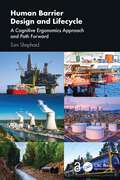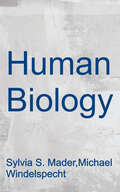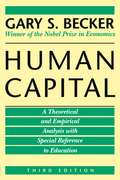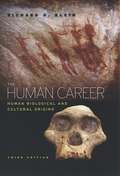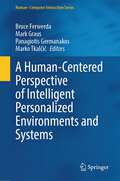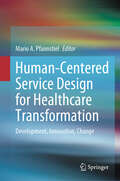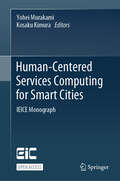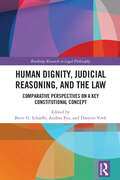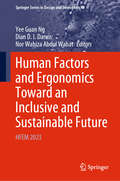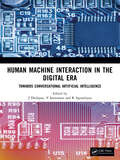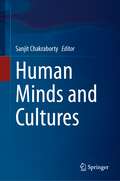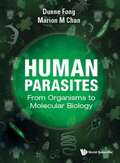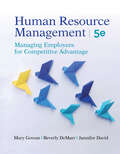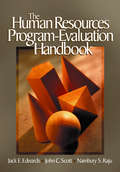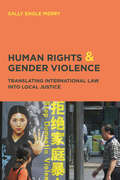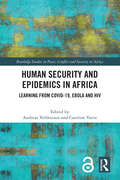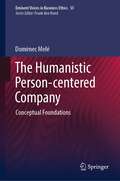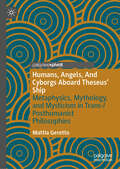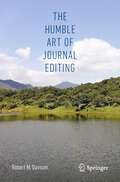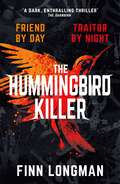- Table View
- List View
Hudson Taylor's Story of his Early Life and The Forming of the China Inland Mission
by J. Hudson Taylor"Hudson Taylor's Story of His Early Life and the Forming of the China Inland Mission" is an inspiring and deeply moving account of the early years of one of the most influential missionaries in history. This book chronicles the formative experiences and profound spiritual journey of James Hudson Taylor, a pioneering figure whose faith and determination led to the establishment of the China Inland Mission (CIM).The narrative begins with Taylor's humble beginnings in England, exploring the events and influences that shaped his character and ignited his passion for missionary work. From his early struggles and profound religious experiences to his unwavering commitment to evangelism, Taylor's story is one of resilience, faith, and visionary leadership.Taylor's journey to China is recounted with vivid detail, capturing the challenges he faced, including cultural barriers, language difficulties, and personal hardships. Despite these obstacles, his steadfast belief in his mission and his innovative approach to cross-cultural ministry set the stage for his enduring legacy.The book details the founding principles of CIM, emphasizing its commitment to reaching the inland provinces of China with the Christian message. Taylor's innovative methods, including the recruitment and training of missionaries, his focus on self-reliance, and his unwavering faith in divine provision, are explored in depth."Hudson Taylor's Story of His Early Life and the Forming of the China Inland Mission" is more than a biography; it is a powerful testament to the impact of faith-driven determination and cross-cultural engagement. It provides valuable insights into the challenges and triumphs of missionary work in 19th-century China and offers timeless lessons in perseverance, cultural sensitivity, and the transformative power of faith.
Human Activity and Behavior Analysis: Advances in Computer Vision and Sensors: Volume 1 (Ubiquitous Computing, Healthcare and Well-being)
by Md Atiqur Rahman AhadHuman Activity and Behavior Analysis relates to the field of vision and sensor-based human action or activity and behavior analysis and recognition. The book includes a series of methodologies, surveys, relevant datasets, challenging applications, ideas, and future prospects.The book discusses topics such as action recognition, action understanding, gait analysis, gesture recognition, behavior analysis, emotion and affective computing, and related areas. This volume focuses on relevant activities in three main subject areas: Healthcare and Emotion, Mental Health, and Nurse Care Records.The editors are experts in these arenas and the contributing authors are drawn from high-impact research groups around the world. This book will be of great interest to academics, students, and professionals working and researching in the field of human activity and behavior analysis.
Human Anatomy
by Michael McKinley Valerie O'Loughlin Elizabeth Pennefather-O'BrienHuman Anatomy stands apart from other texts as it guides students on a clearly written and expertly illustrated beginner’s path through the human body. High-quality photographs paired with brilliantly rendered illustrations help students visualize, understand, and appreciate the wonders of human anatomy. The author team incorporates their combined 70 years of teaching experience into student-friendly learning strategies, built around a pedagogical framework designed to foster retention and encourage the application of knowledge and understanding.
Human Barrier Design and Lifecycle: A Cognitive Ergonomics Approach and Path Forward
by Tom ShephardA common source of failure in a human‑dependent barrier or safety critical task is a designed‑in mismatch error. The mismatch is a cognitive demand that exceeds the human capability to reliably and promptly respond to that demand given the plausible situations at that moment. Demand situations often include incomplete information, increased time pressures, and challenging environments. This book presents innovative solutions to reveal, prevent, and mitigate these and many other cognitive‑type errors in barriers and safety critical tasks. The comprehensive model and methodologies also provide insight into where and to what extent these barriers and task types may be significantly underspecified and the potential consequences.This title presents a new and comprehensive prototype design and lifecycle model specific to human‑dependent barriers and safety critical tasks. Designed to supplement current practice, the model is fully underpinned by cognitive ergonomics and cognitive science. The book also presents a compelling case for why a new global consensus standard specific to human‑dependent barriers is needed. Taking a novel approach, it presents its suggested basis, framing, and content. Both solutions seek to redress deficiencies in global regulations, standards, and practice. The model is guided by industry recommendations and best practice guidance and solutions from globally recognized experts. Its processes are fully explained and supported by examples, analysis, and well‑researched background materials. Real‑life case studies from offshore oil and gas, chemical manufacturing, transmission pipelines, and product storage provide further insight into how overt and latent design errors contributed to barrier degradation and failure and the consequence of those errors.An essential and fascinating read for professionals, Human Barrier Design and Lifecycle: A Cognitive Ergonomics Approach and Path Forward will appeal to those in the fields of human factors, process and technical safety, functional safety, display and safety system design, risk management, facility engineering, and facility operations and maintenance.Chapters 1 and 8 of this book are freely available as downloadable Open Access PDFs at http://www.taylorfrancis.com under a Creative Commons Attribution-Non Commercial-No Derivatives (CC-BYNC-ND) 4.0 International license.
Human Biology
by Sylvia S. Mader Michael WindelspechtMader’s Human Biology introduces the main themes of biology through the lens of the human body. Students improve their scientific literacy while establishing a foundation of knowledge in human biology and physiology. The text integrates tested, traditional content with a modern suite of digital tools.
Human Capital: A Theoretical and Empirical Analysis, with Special Reference to Education
by Gary S. BeckerHuman Capital is Becker's classic study of how investment in an individual's education and training is similar to business investments in equipment. Recipient of the 1992 Nobel Prize in Economic Science, Gary S. Becker is a pioneer of applying economic analysis to human behavior in such areas as discrimination, marriage, family relations, and education. Becker's research on human capital was considered by the Nobel committee to be his most noteworthy contribution to economics. This expanded edition includes four new chapters, covering recent ideas about human capital, fertility and economic growth, the division of labor, economic considerations within the family, and inequality in earnings. "Critics have charged that Mr. Becker's style of thinking reduces humans to economic entities. Nothing could be further from the truth. Mr. Becker gives people credit for having the power to reason and seek out their own best destiny."—Wall Street Journal
The Human Career: Human Biological and Cultural Origins
by Richard G. KleinSince its publication in 1989, The Human Career has proved to be an indispensable tool in teaching human origins. This substantially revised third edition retains Richard G. Klein’s innovative approach while showing how cumulative discoveries and analyses over the past ten years have significantly refined our knowledge of human evolution.Klein chronicles the evolution of people from the earliest primates through the emergence of fully modern humans within the past 200,000 years. His comprehensive treatment stresses recent advances in knowledge, including, for example, ever more abundant evidence that fully modern humans originated in Africa and spread from there, replacing the Neanderthals in Europe and equally archaic people in Asia. With its coverage of both the fossil record and the archaeological record over the 2.5 million years for which both are available, The Human Career demonstrates that human morphology and behavior evolved together. Throughout the book, Klein presents evidence for alternative points of view, but does not hesitate to make his own position clear.In addition to outlining the broad pattern of human evolution, The Human Career details the kinds of data that support it. For the third edition, Klein has added numerous tables and a fresh citation system designed to enhance readability, especially for students. He has also included more than fifty new illustrations to help lay readers grasp the fossils, artifacts, and other discoveries on which specialists rely. With abundant references and hundreds of images, charts, and diagrams, this new edition is unparalleled in its usefulness for teaching human evolution.
A Human-Centered Perspective of Intelligent Personalized Environments and Systems (Human–Computer Interaction Series)
by Marko Tkalčič Panagiotis Germanakos Bruce Ferwerda Mark GrausThis book investigates the potential of combining the more quantitative - data-driven techniques with the more qualitative - theory-driven approaches towards the design of user-centred intelligent systems. It seeks to explore the potential of incorporating factors grounded in psychological theory into adaptive/intelligent routines, mechanisms, technologies and innovations. It highlights models, methods and tools that are emerging from their convergence along with challenges and lessons learned. Special emphasis is placed on promoting original insights and paradigms with respect to latest technologies, current research trends, and innovation directions, e.g., incorporating variables derived from psychological theory and individual differences in adaptive intelligent systems so as to increase explainability, fairness, and transparency, and decrease bias during interactions while the control remains with the user.
Human-Centered Service Design for Healthcare Transformation: Development, Innovation, Change
by Mario A. PfannstielThis book explores the use of human-centered service design. Through a variety of case studies and best practices, it highlights ways to systematically improve the provision of healthcare services to different target and age groups in order to understand customer expectations and needs. The book also offers new insights into the dyadic relationship between service provider and customer, each of which has their own set of goals, purposes, and benefits and must cope with a scarcity of resources and opportunities to optimize and design. Written by recognized experts, scholars, and practitioners, this book demonstrates how, where, and when to successfully apply human-centered service design at multiple levels, including corporate, departmental, and product/service. Value-added services are not only assessed in terms of their effectiveness, efficiency, and productivity, but also bearing in mind human emotions, interactions, and communication techniques as an important part of service provision. Accordingly, the book will appeal to scholars and practitioners in the hospital and healthcare sector, and to anyone interested in organizational development, service business model innovation, customer involvement and perceptions, and the service experience.
Human-Centered Services Computing for Smart Cities: IEICE Monograph
by Yohei Murakami Kosaku KimuraThis open-access book compiles seven monographs from researchers at the forefront of services computing and artificial intelligence for smart cities. This is structured into three thematic parts: service composition, big data analysis, and service integration for smart cities.The first part describes service compositions for smart cities, where interaction between services and the physical world, including humans, is paramount, unlike services on the Web and clouds. The second part addresses the challenges of big data analytics in smart cities, with a focus on privacy-preserving methodologies. The third part reports human-centered service integration for applications in smart cities.
Human Dignity, Judicial Reasoning, and the Law: Comparative Perspectives on a Key Constitutional Concept (Routledge Research in Legal Philosophy)
by Andrea Pin Brett G. Scharffs Dmytro VovkThis volume explores how national and international human rights courts interpret and apply human dignity. The book tracks the increasing deployment of the concept of human dignity within national and international courts in recent decades. It identifies how human-dignity-based arguments have expanded to cover larger sets of cases: from the right to life or to integrity or anti-discrimination, the concept has surfaced in disputes about political and social rights and rule of law requirements, such as equality or legal certainty. The core message of the book is that judges understand, interpret, and apply human dignity differently. An inflation in the judicial recourse to human dignity can saturate the legal environment, depriving the concepts as well as human-rights-based narratives of salience, and threaten the predictability of court decisions. The book will appeal to philosophers of law, constitutional theorists and lawyers, legal comparativists, and internal law specialists. Whilst being dedicated specifically to human dignity jurisprudence, the book touches on many aspects of judiciary and as such will also be of interest to researchers studying legal reasoning, interpretation and application of the law and courts, as well as social philosophers, political scientists, and sociologists of law, politics, and religion.
Human Factors and Ergonomics Toward an Inclusive and Sustainable Future: HFEM 2023 (Springer Series in Design and Innovation #46)
by Yee Guan Ng Dian D. I. Daruis Nor Wahiza Abdul WahatThis book gathers the refereed proceedings of the 5th HFEM Biennial Conference on Human Factors and Ergonomics, organized by the Human Factors and Ergonomics Society Malaysia, held in Langkawi, Malaysia on August 13–18, 2023. Under the theme "Accelerating Human Factors and Ergonomics Toward an Inclusive and Sustainable Future", it highlights the latest theories and models, as well as cutting-edge technologies and applications on human factors and ergonomics. By combining findings from a range of disciplines including engineering, design, robotics, health care, management, computer science, human biology, and behavioral science, it offers an excellent source of innovative ideas to stimulate future discussions and developments aimed at applying knowledge and techniques to optimize system performance, while at the same time promoting the health, safety, and well-being of individuals. It includes papers from researchers and practitioners, scientists and physicians, institutional leaders, managers, and policy makers that contribute to constructing the human factors and ergonomics approach across a variety of methodologies, domains, and productive sectors.
Human Machine Interaction in the Digital Era: Towards Conversational Artificial Intelligence
by J. Dhilipan V. Saravanan R. AgusthiyarThe Human Machine Interaction in the Digital Era (ICHMIDE) 2023 conference aims to address the main issues of concern in the design issues with a particular emphasis on the design and development of interfaces for autonomous robots. Its main objective is to provide an international forum for the dissemination and exchange of up-to-date scientific information on research related to integrated human/machine systems at multiple scales, and includes areas such as human/machine interaction, engineering mathematical models, assistive technologies, system modelling, design, testing and validation. The organization of ICHMS is based on the following Track types: Smart Applications for Digital Era, Computational Mathematical and Electronics, Intelligent Systems in Security and Communication Technologies, Technological Interventions using AI and Machine Learning, Applied Science, and IoT Techniques for Industries.
Human Minds and Cultures
by Sanjit ChakrabortyThis book puts forward a harmonious analysis of similarities and differences between two concepts—human minds and cultures—and strives for a multicultural spectrum of philosophical explorations that could assist them in pondering the striking pursuit of envisaging human minds and cultures as an essential appraisal of philosophy and the social sciences. The book hinges on a theoretical understanding of the indispensable liaison between the dichotomy of minds and objectivity residing in semantic-ontological conjectures. The ethnographic sense of cultures confines the scope of cultural scientism, an evolutionary paradigm on the functionalist turn, where one could enthral the cultural phenomenon from the contentment of the conflict of scientific quandaries. Hence, cultural relativism concedes that cultures have some descriptive contents, like customs, beliefs, moral codes, other minds, etc., that are followed by an individual or a group of people. However, the notion of societalsemiotics embarks on the ‘semiotic conception of culture’ that deploys modernity and values centred on ethical conjectures. Human Minds and Cultures conspicuously attune the cultural edifice of moral minds and cope with the enduring prospects of ethics, genders, laws, and socio-political affairs. Essential reading for anyone with a sparkling interest in human minds and cultures.
Human Parasites: From Organisms To Molecular Biology (G - Reference,information And Interdisciplinary Subjects Ser.)
by Dunne Fong Marion M. ChanWhy does the World Health Organization (WHO) put emphasis on neglected tropical diseases (NTDs)? What are the NTDs? Are NTDs found in the United States? Is there any relationship between coronavirus disease 2019 (COVID-19) and NTDs? These are some of the questions being addressed in the book.The aim of this textbook is to introduce a modern synthesis on human parasites of medical importance. Species of parasitic protozoa and helminths are presented in detail, from history and discovery to aspects of genomes and molecular biology, together with life cycle, therapy, drug resistance, and case studies of parasitic diseases useful to the clinicians.
Human Resource Management: Managing Employees for Competitive Advantage
by Mary Gowan Beverly J. DeMarr Jannifer DavidFormerly published by Chicago Business Press, now published by Sage Human Resource Management: Managing Employees for Competitive Advantage, Fifth Edition offers a strategic framework—applicable across large and small organizations—to efficiently recognize and empower the right talent in a rapidly evolving business environment. Written in an accessible and engaging manner, authors Mary Gowan, Beverly DeMarr, and Jannifer David enable students to learn about the various practices and tools that can be used for effective employee management, as well as how to leverage them in different situations. This title is accompanied by a complete teaching and learning package. Learning Platform / Courseware Sage Vantage is an intuitive learning platform that integrates quality Sage textbook content with assignable multimedia activities and auto-graded assessments to drive student engagement and ensure accountability. Unparalleled in its ease of use and built for dynamic teaching and learning, Vantage offers customizable LMS integration and best-in-class support. It′s a learning platform you, and your students, will actually love. Assignable Video with Assessment Assignable video (available in Sage Vantage) is tied to learning objectives and curated exclusively for this text to bring concepts to life. LMS Cartridge: Import this title’s instructor resources into your school’s learning management system (LMS) and save time. Don’t use an LMS? You can still access all of the same online resources for this title via the password-protected Instructor Resource Site.
Human Resource Management: Managing Employees for Competitive Advantage
by Mary Gowan Beverly J. DeMarr Jannifer DavidFormerly published by Chicago Business Press, now published by Sage Human Resource Management: Managing Employees for Competitive Advantage, Fifth Edition offers a strategic framework—applicable across large and small organizations—to efficiently recognize and empower the right talent in a rapidly evolving business environment. Written in an accessible and engaging manner, authors Mary Gowan, Beverly DeMarr, and Jannifer David enable students to learn about the various practices and tools that can be used for effective employee management, as well as how to leverage them in different situations. This title is accompanied by a complete teaching and learning package. Learning Platform / Courseware Sage Vantage is an intuitive learning platform that integrates quality Sage textbook content with assignable multimedia activities and auto-graded assessments to drive student engagement and ensure accountability. Unparalleled in its ease of use and built for dynamic teaching and learning, Vantage offers customizable LMS integration and best-in-class support. It′s a learning platform you, and your students, will actually love. Assignable Video with Assessment Assignable video (available in Sage Vantage) is tied to learning objectives and curated exclusively for this text to bring concepts to life. LMS Cartridge: Import this title’s instructor resources into your school’s learning management system (LMS) and save time. Don’t use an LMS? You can still access all of the same online resources for this title via the password-protected Instructor Resource Site.
The Human Resources Program-Evaluation Handbook
by John C. Scott Nambury S. Raju Jack E. EdwardsTechnological advances and rapid changes in workforce demographics pose extensive challenges to human resources program evaluators. But little has been done to document successful human resources program assessment and implementation strategies. The Human Resources Program-Evaluation Handbook is the first book to present state-of-the-art procedures for evaluating and improving human resources programs. Editors Jack E. Edwards, John C. Scott, and Nambury S. Raju provide a user-friendly yet scientifically rigorous "how to" guide to organizational program-evaluation. Integrating perspectives from a variety of human resources and organizational behavior programs, a wide array of contributing professors, consultants, and governmental personnel successfully link scientific information to practical application. Offering authoritative guidance to both novice and experienced program evaluators, this unique guidebook includes New perspectives on organizational program-evaluation Methods to assess the efficiency of human resources programs Identification of potential pitfalls Real-life examples Additional references for program-evaluation best practices The Human Resources Program-Evaluation Handbook provide program-evaluation teams with content-specific guidance. Supplying useful and accurate evaluation techniques, the editors present a manual for enhancing the effectiveness and efficiency of most major types of human resources programs. Designed for academics and graduate students in industrial-organizational psychology, human resources management, and business, the handbook is also an essential resource for human resources professionals, consultants, and policy makers.
The Human Resources Program-Evaluation Handbook
by John C. Scott Nambury S. Raju Jack E. EdwardsTechnological advances and rapid changes in workforce demographics pose extensive challenges to human resources program evaluators. But little has been done to document successful human resources program assessment and implementation strategies. The Human Resources Program-Evaluation Handbook is the first book to present state-of-the-art procedures for evaluating and improving human resources programs. Editors Jack E. Edwards, John C. Scott, and Nambury S. Raju provide a user-friendly yet scientifically rigorous "how to" guide to organizational program-evaluation. Integrating perspectives from a variety of human resources and organizational behavior programs, a wide array of contributing professors, consultants, and governmental personnel successfully link scientific information to practical application. Offering authoritative guidance to both novice and experienced program evaluators, this unique guidebook includes New perspectives on organizational program-evaluation Methods to assess the efficiency of human resources programs Identification of potential pitfalls Real-life examples Additional references for program-evaluation best practices The Human Resources Program-Evaluation Handbook provide program-evaluation teams with content-specific guidance. Supplying useful and accurate evaluation techniques, the editors present a manual for enhancing the effectiveness and efficiency of most major types of human resources programs. Designed for academics and graduate students in industrial-organizational psychology, human resources management, and business, the handbook is also an essential resource for human resources professionals, consultants, and policy makers.
Human Rights & Gender Violence: Translating International Law into Local Justice (Chicago Series In Law And Society Ser.)
by Sally Engle MerryHuman rights law and the legal protection of women from violence are still fairly new concepts. As a result, substantial discrepancies exist between what is decided in the halls of the United Nations and what women experience on a daily basis in their communities. Human Rights and Gender Violence is an ambitious study that investigates the tensions between global law and local justice. As an observer of UN diplomatic negotiations as well as the workings of grassroots feminist organizations in several countries, Sally Engle Merry offers an insider's perspective on how human rights law holds authorities accountable for the protection of citizens even while reinforcing and expanding state power. Providing legal and anthropological perspectives, Merry contends that human rights law must be framed in local terms to be accepted and effective in altering existing social hierarchies. Gender violence in particular, she argues, is rooted in deep cultural and religious beliefs, so change is often vehemently resisted by the communities perpetrating the acts of aggression. A much-needed exploration of how local cultures appropriate and enact international human rights law, this book will be of enormous value to students of gender studies and anthropology alike.
Human Security and Epidemics in Africa: Learning from COVID-19, Ebola and HIV (Routledge Studies in Peace, Conflict and Security in Africa)
by Velthuizen, Edited by Andreas Caroline VarinThis book examines the impact of epidemics in Africa, exploring some of the adaptation and crisis management strategies adopted to tackle COVID-19, Ebola, and HIV-AIDS. The authors reflect on lessons learned from solving complex problems and difficult decisions made by leaders on pandemic management to shape the security environment and, thus, the well-being of people living in Africa for years to come.Drawing on cases from across the continent, the book demonstrates that, significantly, during the COVID-19 pandemic, African countries and communities frequently displayed regional solidarity, creativity in decision-making, decisiveness in dealing with corruption and opportunism, and resilience and discipline in implementation. Adopting a human security framework, the authors share their lived experiences and explore the impact of epidemics on public policy decision-making, foreign policy implementation, global relations, collaboration in the community dimension, and, ultimately, the future of socio-economic development in Africa.This book will be a welcome addition for practitioners and researchers across the fields of security studies, health management, and African studies, making an essential contribution to the security discourse in a post-COVID world.
The Humanistic Person-centered Company (Issues in Business Ethics #55)
by Domènec MeléHumanism in business is not only an alternative to economism but a way to human excellence. Humanism presented here revolves around the rich notion of “human person”, keystone of modern personalist philosophy and Catholic Social Teaching. From this perspective this book is offered to everyone, believer and nonbeliever alike. The person-centered humanism considers the human-wholeness, individual and relational, with subjectivity, self-determination, openness to transcendence, and with capacity not only to possess but also to give. It also highlights the uniqueness of each person, endowed with a high constitutive dignity and in continuous process of flourishing toward human plenitude. An attitude of respect and good will is due to non-personal beings, while persons deserve to be treated with justice and even with love of benevolence. The book is prepared in dialogue with mainstream of thought in business and business ethics and focused on exploring ways to improve some conventional views. It includes some proposals such as a person-based ethics, ethics understood as intrinsic to business activity, the consideration of the company as an organized community of persons, and the purpose of the company oriented toward the common good through a double mission, internal and external. It is also suggested substituting the notion of “stakeholder” for the richer one of “relationholder.”
Humans, Angels, And Cyborgs Aboard Theseus' Ship: Metaphysics, Mythology, and Mysticism in Trans-/Posthumanist Philosophies
by Mattia GerettoThis book addresses the most suggestive themes of transhumanism and critical posthumanism by placing them in dialogue with classic problems of metaphysics, and with some great thinkers of the past (Bruno, Spinoza, and above all Leibniz). The main purpose of this comparison is to invite transhumanists and critical posthumanists to consider a highly complex problematic tradition rooted in the history of philosophy. This study also makes use of examples drawn from the history of mythology, angelology, and mysticism. At the same time, the book promotes dialogue between scholars of classical metaphysics and philosophy of religion, and the potential metaphysical/spiritual theories developed independently by transhumanist and posthumanist thinkers within an anti-dualist and naturalistic philosophical framework. The goal is to ‘enhance’ contemporary transhumanism and posthumanism by promoting the need to safeguard intelligence as a principle, without falling into the trap of a violent and egotistic metaphysics.
The Humble Art of Journal Editing
by Robert M. DavisonThe publication of scholarly research is both a major driver of social progress and a significant industry in its own right. Scholarly research is the focus of attention for countless numbers of scholars globally and a key measure of scholarly excellence. Much has been written about the conduct of research that is designed to help scholars attain appropriate standards of rigor and relevance, and indeed craft their research outputs in ways appropriate for different venues, notably as journal articles, conference papers, book chapters, and books. However, although scholarly researchers fulfill roles other than as authors, for instance as journal reviewers and editors, there is a dearth of consolidated information about the nature of editorial work. Drawing on over two decades of experience in editing scholarly journals, the author offers a more systematic guide to scholarly journal editing.The book begins with an introduction to the art of scholarly journal editing,the nature of that art (Chapter 1), and an examination of editorial promulgation of cultural values of scholarly journals with an emphasis on responsible research (Chapter 2). Chapter 3 examines the many issues associated with sourcing content, and opines on the novelty, breadth, and depth of research, including discussions of indigenous theorization, serendipity, iconoclastic research, and the value of special issues. Chapter 4 deals with the review process and offers advice for formulating effective reviewer guidelines that lead to constructive and developmental advice for authors. The next two chapters discuss the audience of the journal as well as publisher relations. Finally, the book is concluded with thoughts and recommendations about emerging challenges, such as the ethics of AI tools (like ChatGPT), predatory journals, and the open-access movement.Offering a practical guide to editing scholarly journals, this book will be a key resource for scholars making the leap from researcher to editor, regardless of discipline.
The Hummingbird Killer
by Finn LongmanFriend by day. Traitor by night. The second book in the dark, twisting thriller trilogy about a teen assassin&’s attempt to live a normal life. Don't miss the epic conclusion to the series, coming May 2024. 'A dark, enthralling thriller' The Guardian Teen assassin Isabel Ryans now works for Comma, and she&’s good at it: the Moth is the guild&’s most notorious killer, infamous throughout the city of Espera. But Isabel still craves normality, and she won&’t find it inside the guild. She moves in with a civilian flatmate, Laura, and begins living a double life, one where she gets to pretend she&’s free. But when Isabel&’s day job tangles her up with an anti-guild abolitionist movement, it becomes harder to keep her two lives separate. Forced to choose between her loyalty to her friends and her loyalty to Comma, she finds herself with enemies on all sides, particularly those from the rival guild Hummingbird, putting herself and Laura at risk. Can Isabel ever truly be safe in a city ruled by killers?From award-winning author Finn Longman, an exhilarating voice in YA fiction, comes an addictive trilogy for fans of global phenomena The Girl with the Dragon Tattoo, Killing Eve and The Hunger Games.PRAISE FOR THE BUTTERFLY ASSASSIN: 'An immersive, fast-paced thriller' The Irish Times 'An electrifying debut!&’ Chelsea Pitcher, author of This Lie Will Kill You &‘A heart-in-your-mouth thriller that grips you from the first page until the very last.&’ Benjamin Dean, author of The King is Dead 'A bold, jagged and uncompromising thriller that will keep you guessing all the way to the end.&’ Tom Pollock, author of White Rabbit, Red Wolf &‘Sharp and layered, with a bright beating heart. The Butterfly Assassin will lure you deep into a fascinating and dangerous new world.&’ Rory Power, author of Wilder Girls &‘An utterly addictive story. I told myself "just one more chapter" well into the night.&’ Emily Suvada, author of This Mortal Coil &‘Fierce, thrilling, and impossible to put down. Packed full of amazing friendships, plot twists and a desperate fight to survive&’ C. G. Drews, author of The Boy Who Steals Houses
